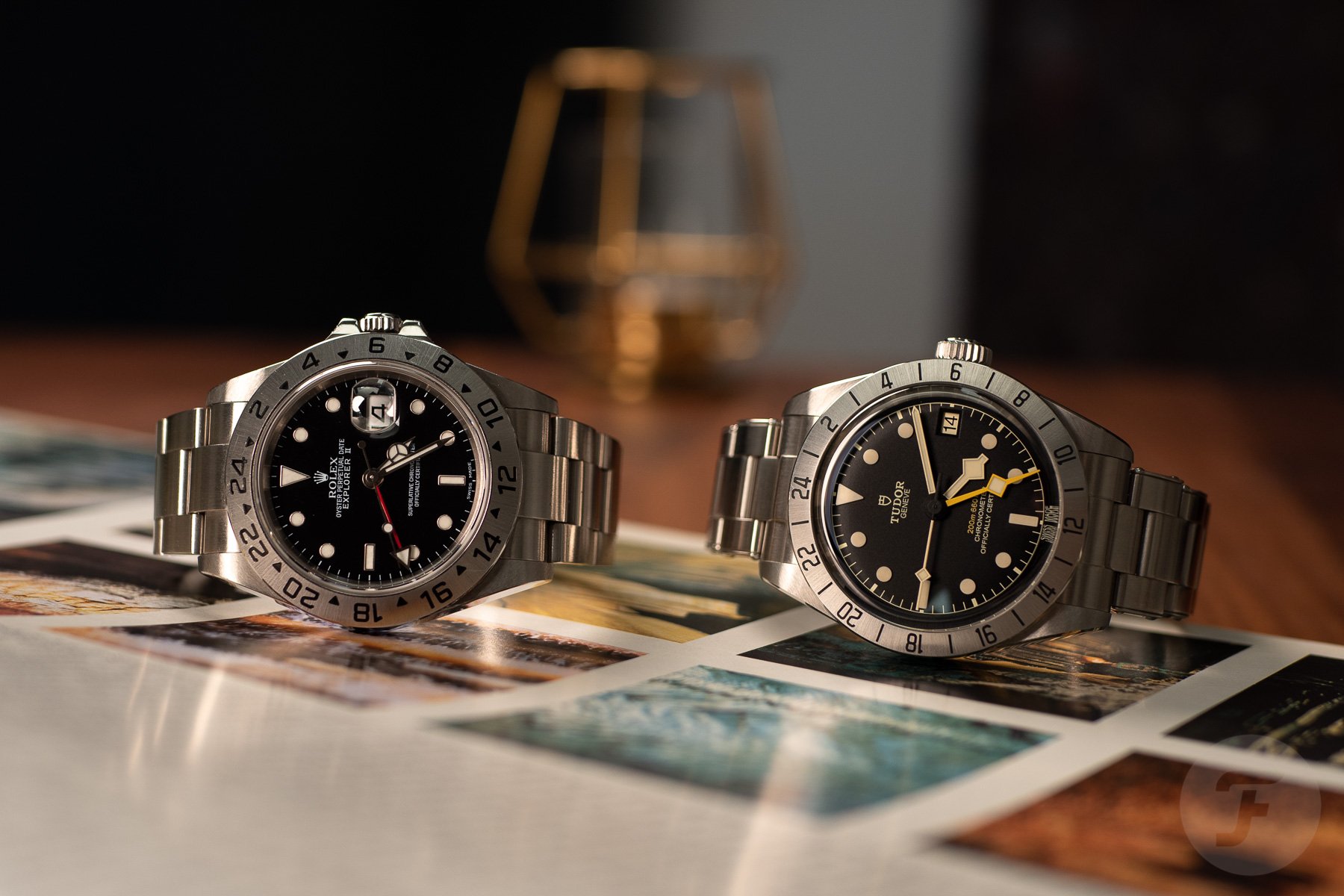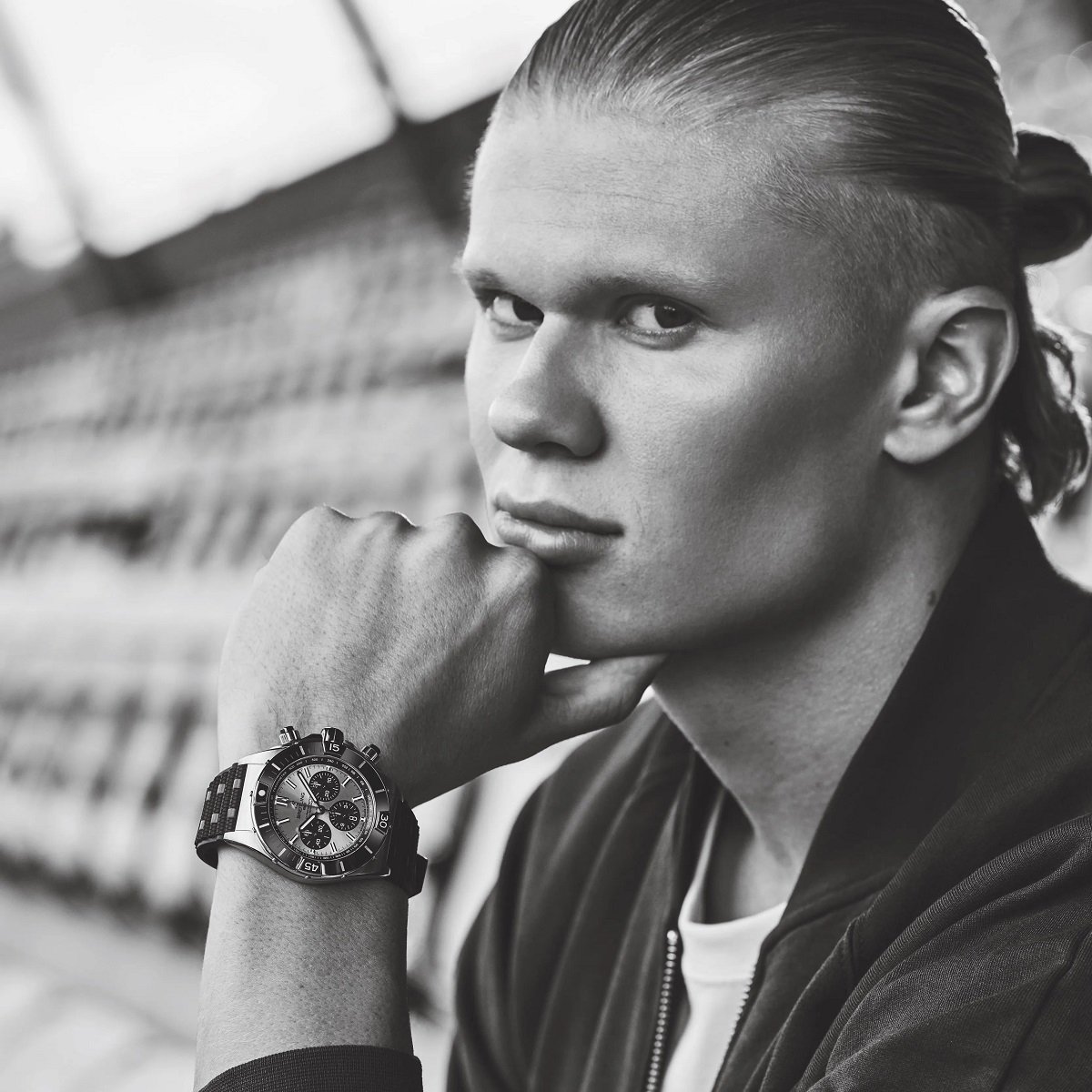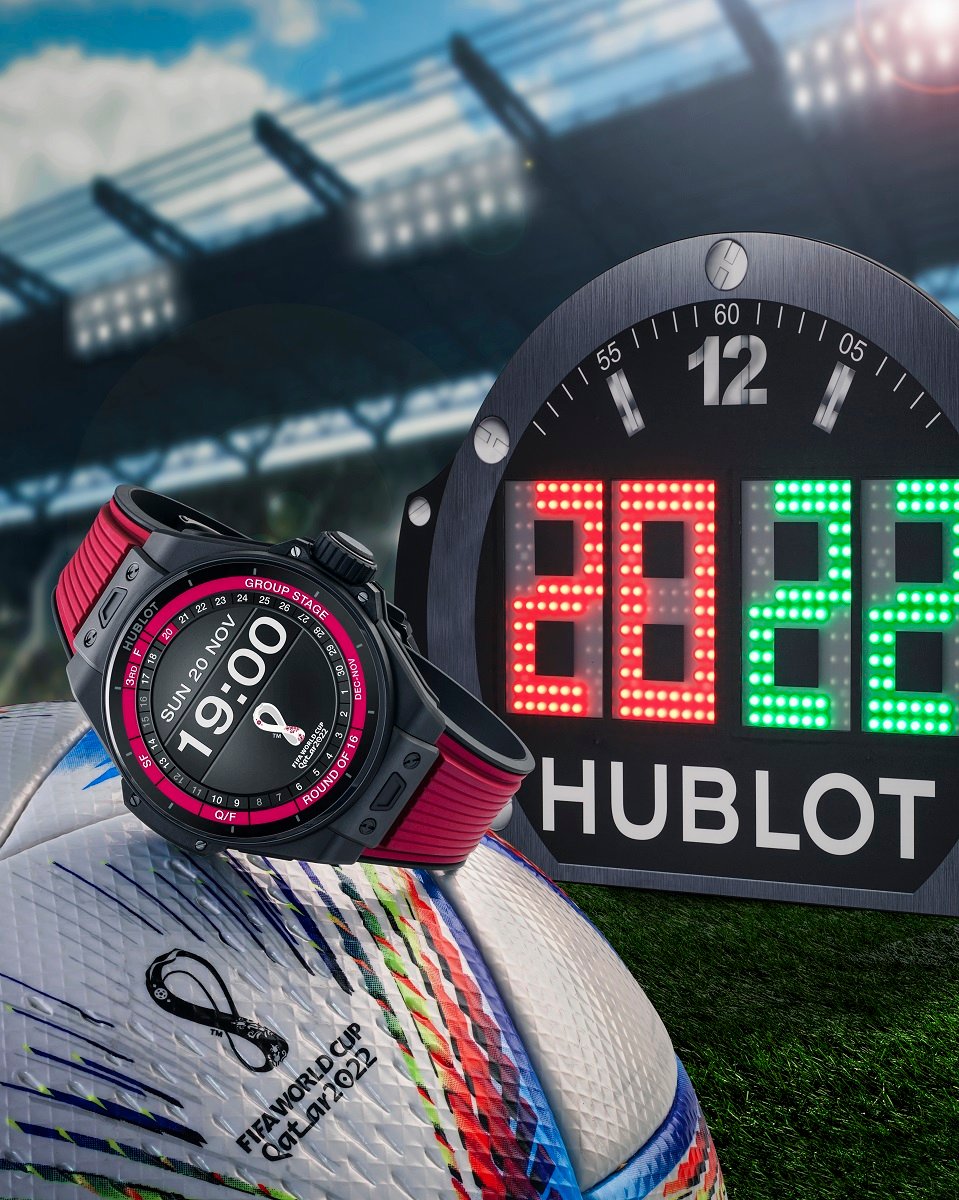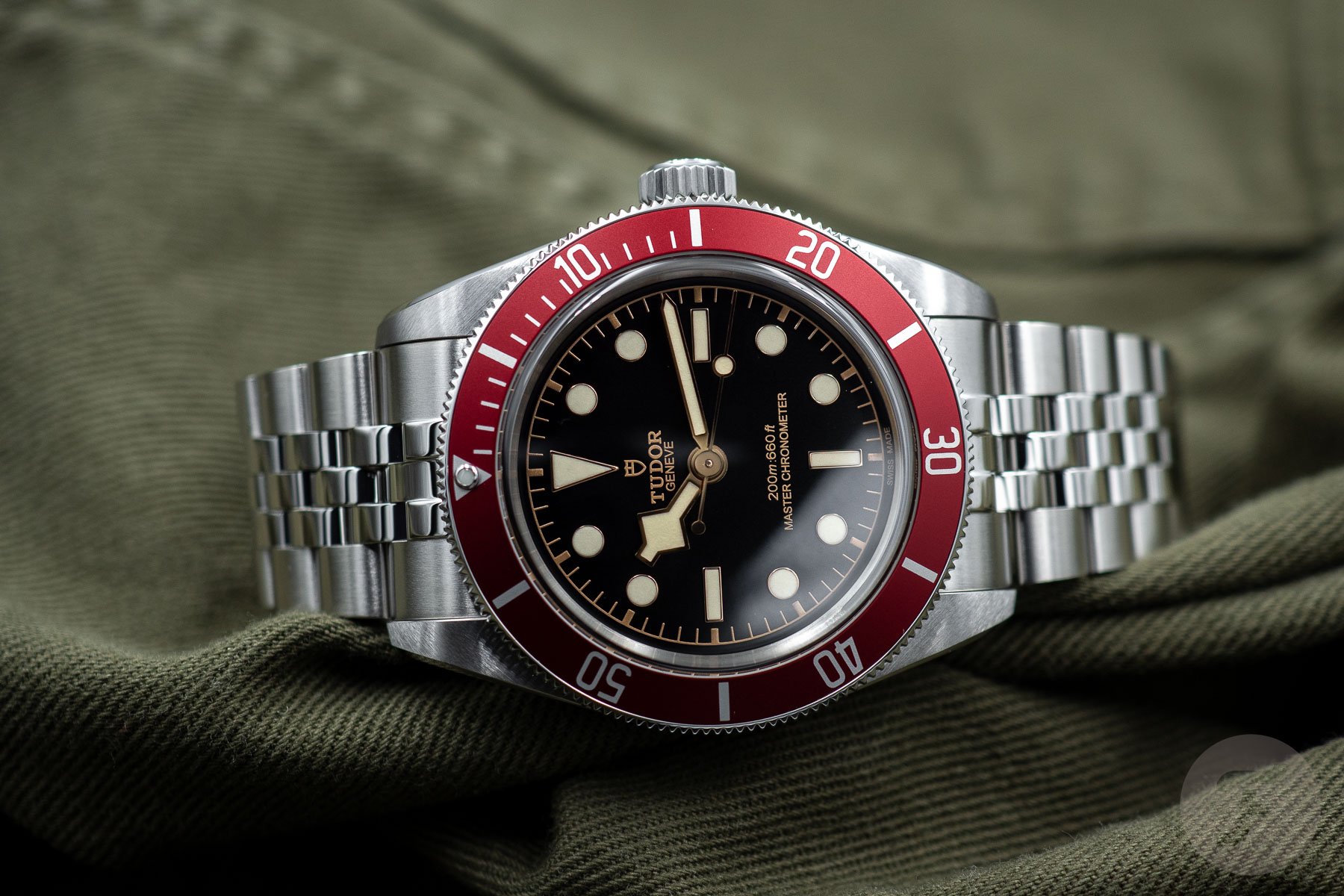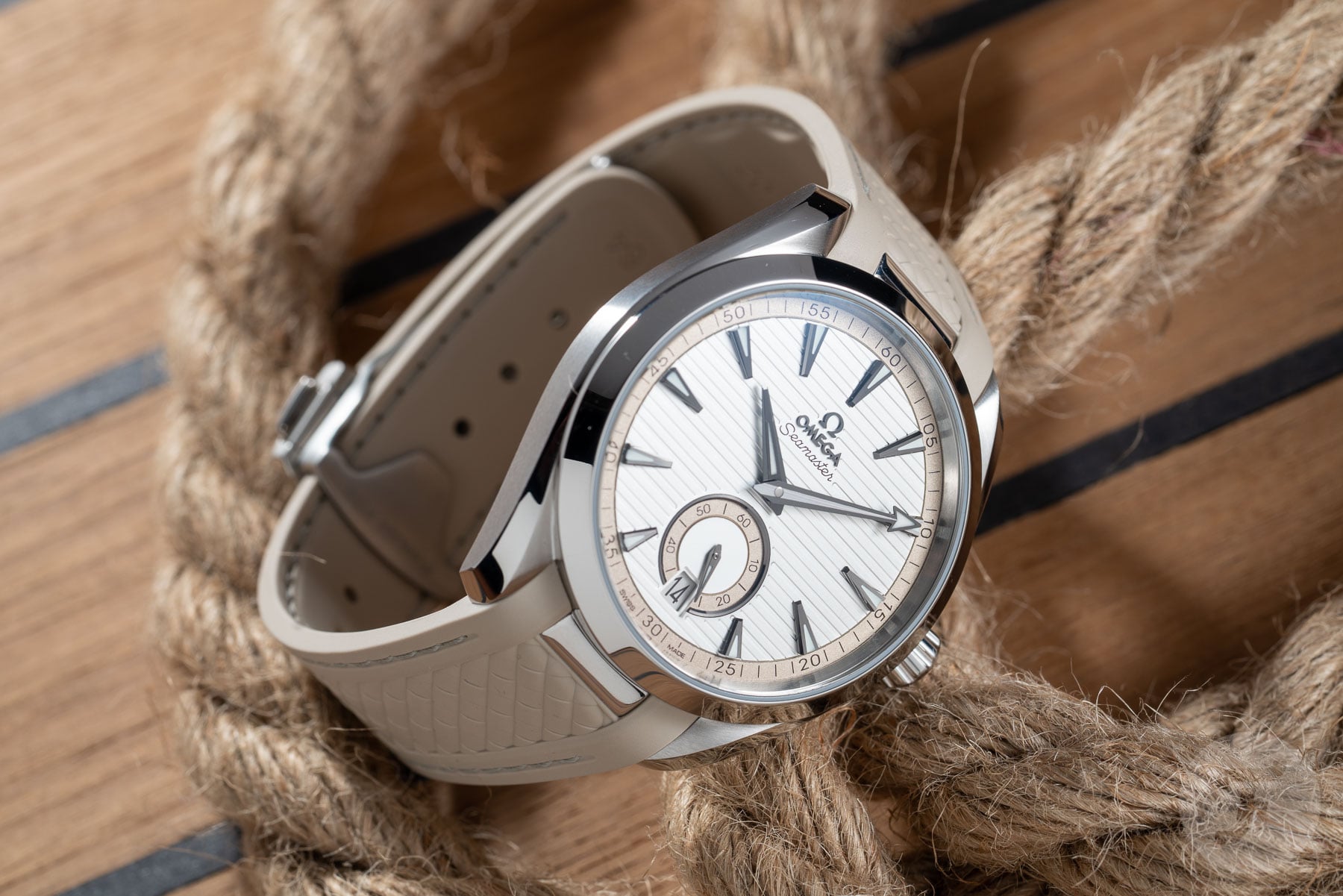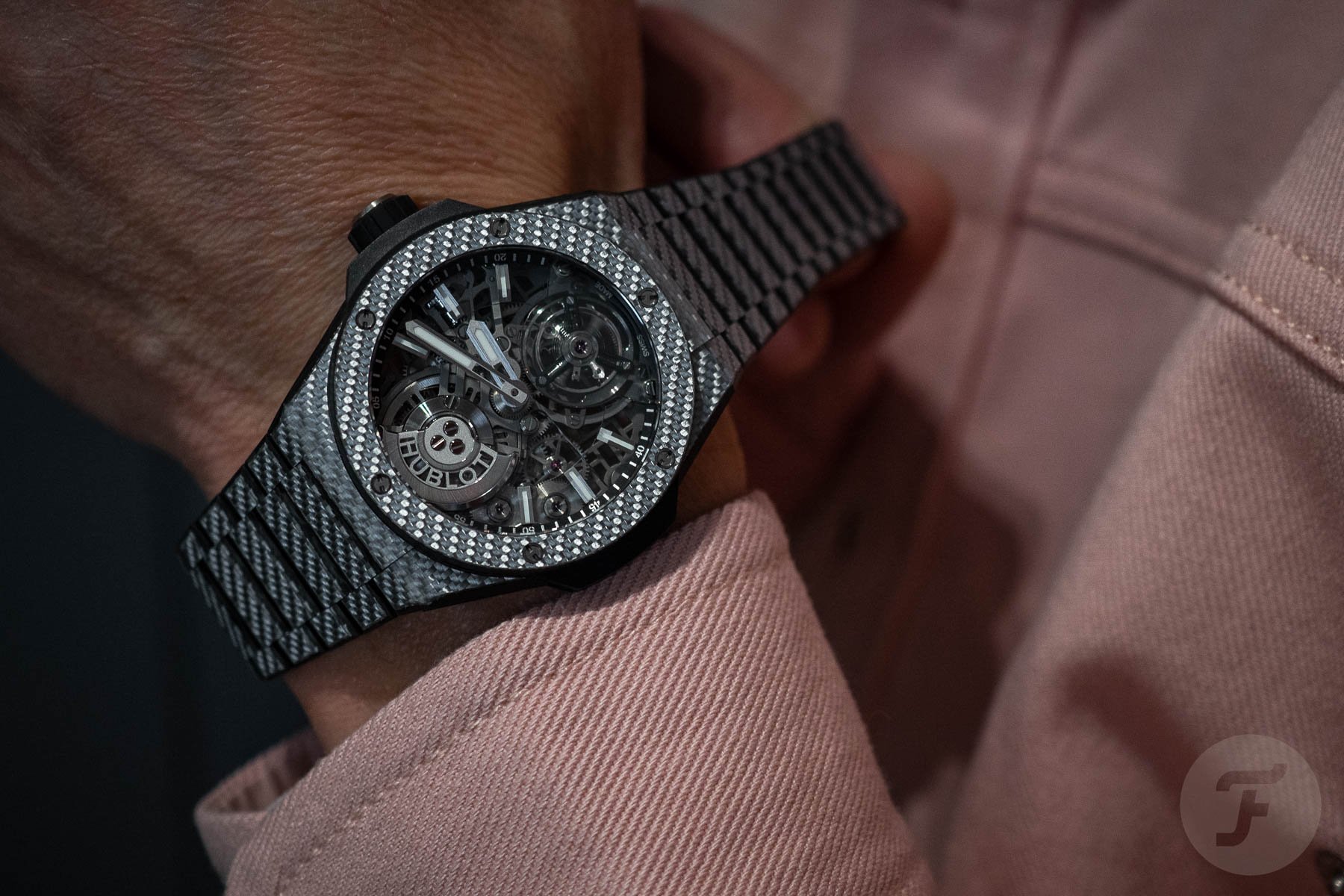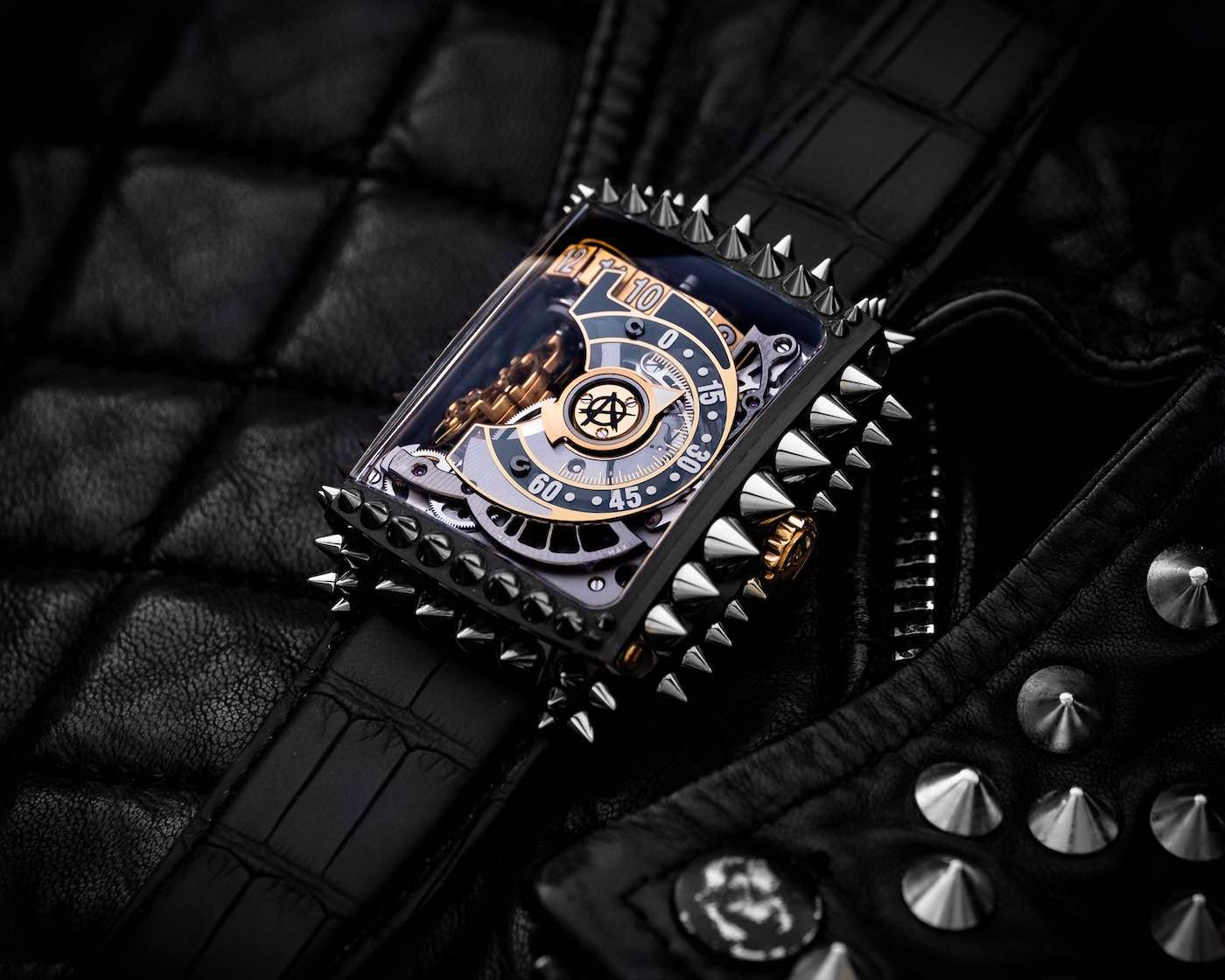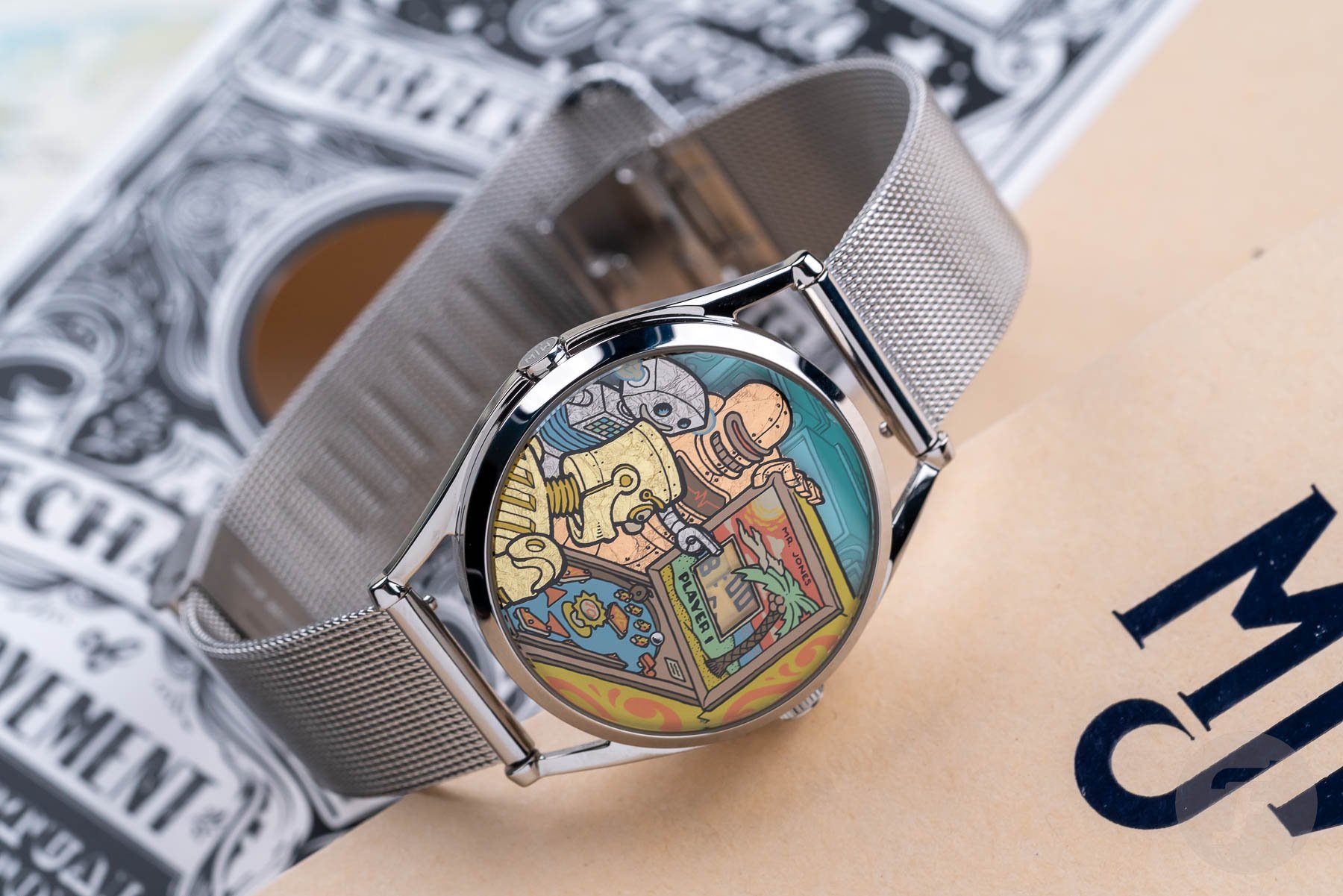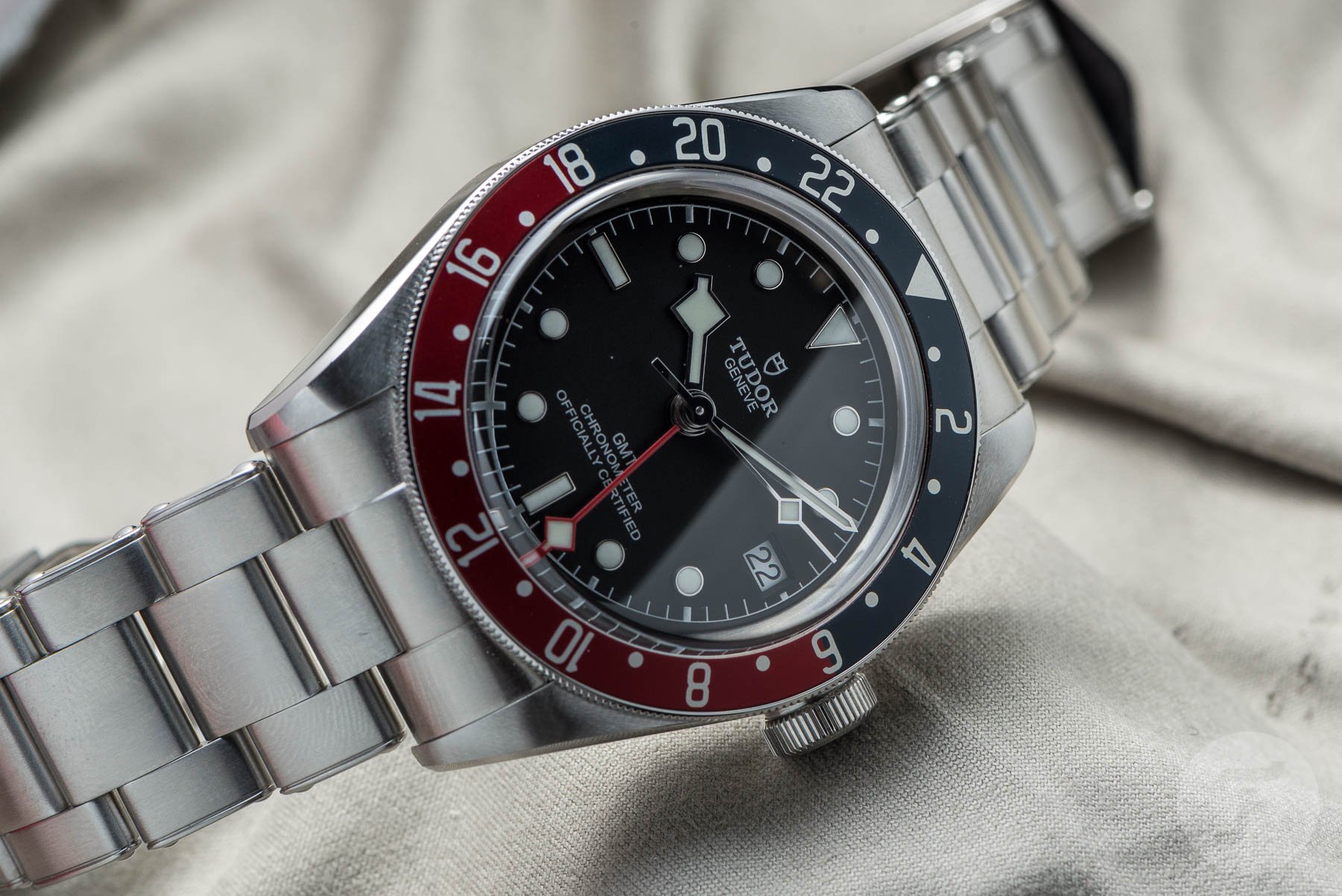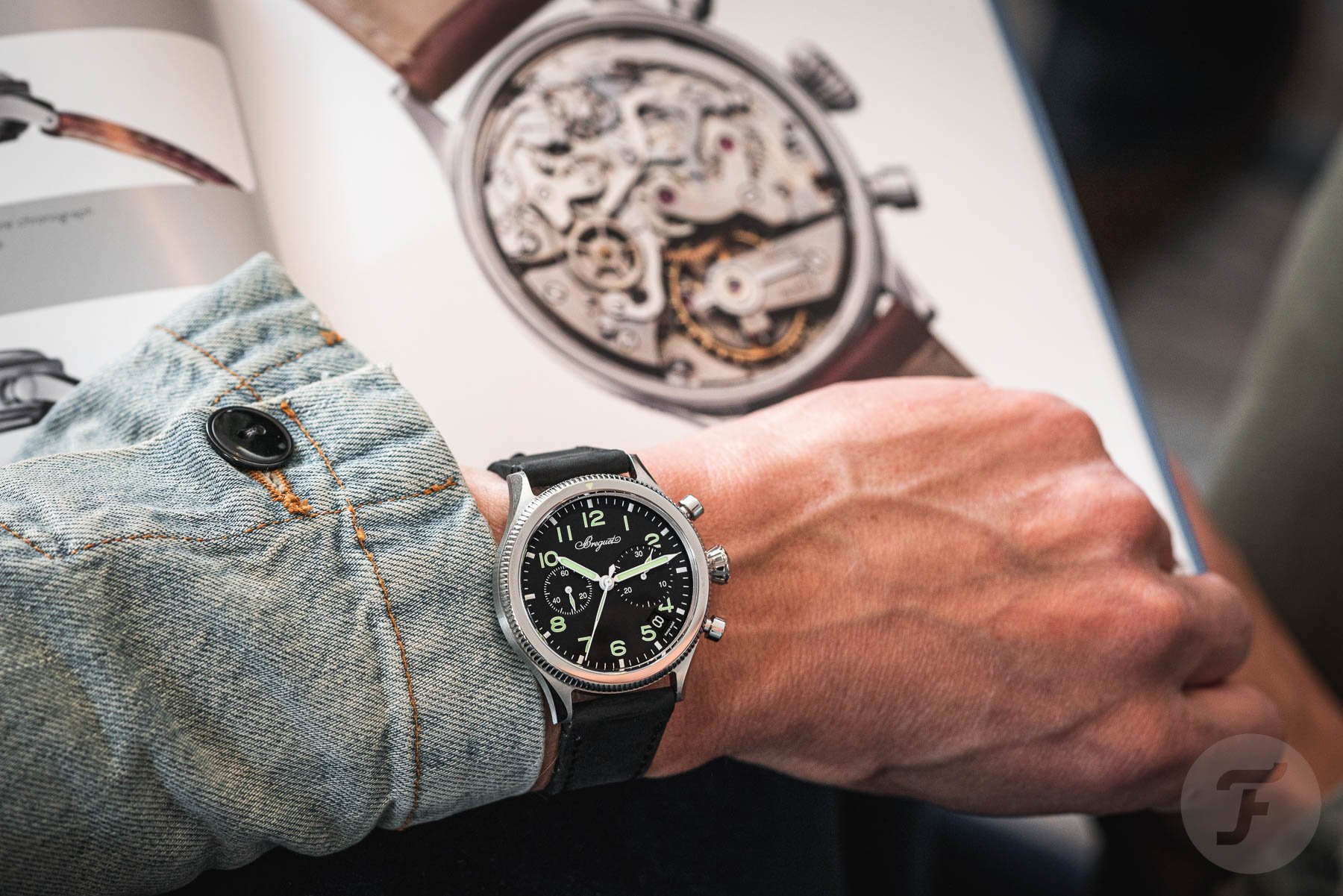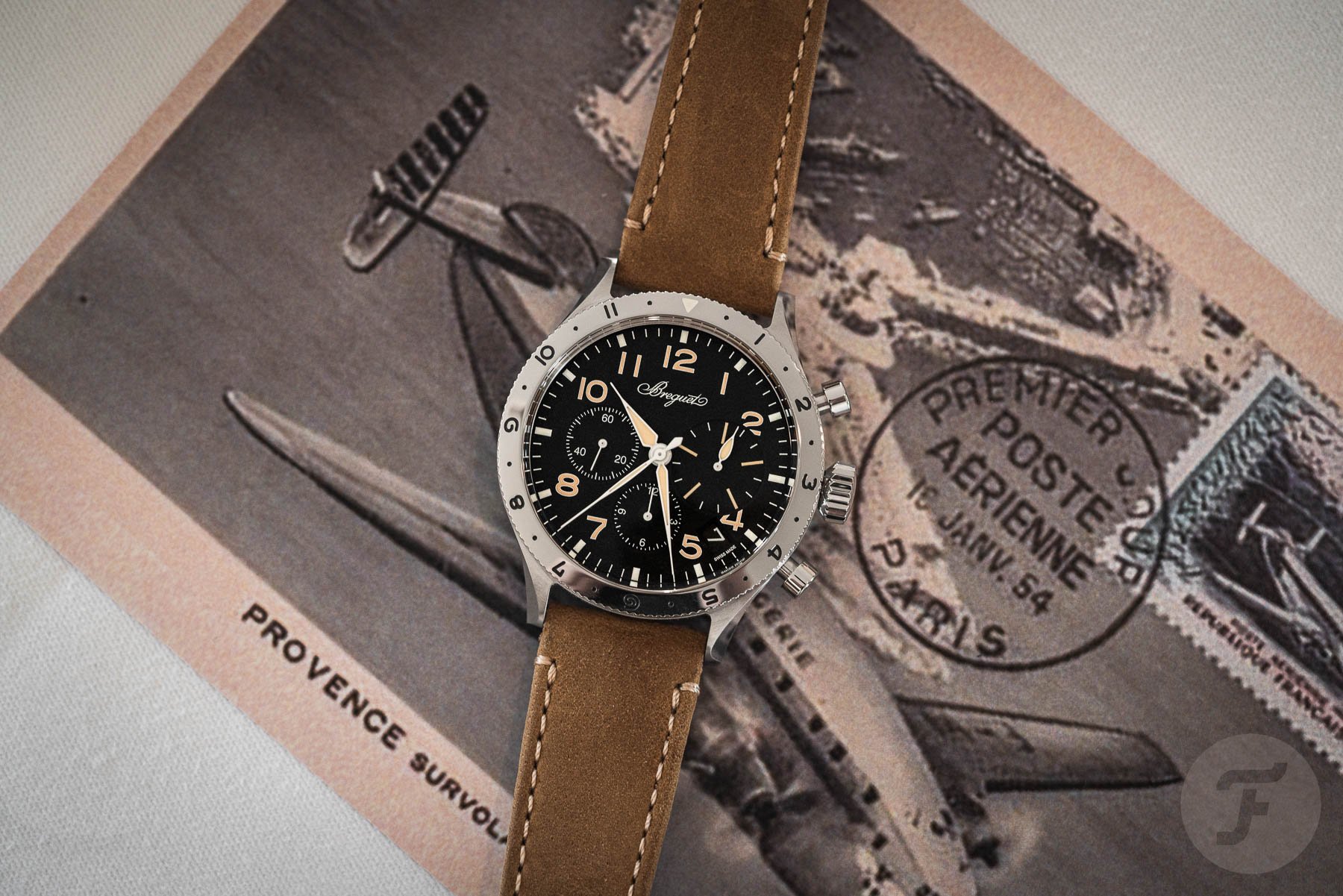When Two Tribes Go To War, A Point Is All That You Can Score — Watch Fans Behaving Like Football Fans
Breitling ferociously chasing Tudor — I saw it happening while I was watching the Tour of Slovenia on television. A rider from the Tudor team attacked, and there was an immediate response from a Q36.5 team rider, a guy with big Breitling logos on his shirt. The Breitling guy caught the Tudor guy, and after that moment, I kept noticing how much the two Swiss teams were marking each other. It looked like a race within the race and, foolishly, one without a real winner. That’s when the Frankie Goes To Hollywood Cold War song popped up in my mind. With it came the idea of watch fans of different brands chasing each other. A wild thought of watch fans behaving like football fans — no, football hooligans — led to this think piece.
Before I roll out my wild thoughts, I will explain briefly why I chose the word “football” and not “soccer.” First, it’s because I’m Dutch, but it’s also because the words “soccer” and “hooligans” don’t match. With that out of the way, let’s play “Two Tribes” at a considerable volume and find out about tribalism in watch culture, something I think is a real thing and a real threat too. It all started with the “Paneristi,” I guess. This was a passionate group of Panerai fans who supported the brand but also kept it on its toes. For all kinds of reasons I will not go into now — I already did that in a Breaking Down The Brand article — the voice of the Paneristi dimmed down.
Watch fans behaving like football fans: the rise of the Tudoristi
The most outspoken watch fans in the Fratello comment section are Tudor fans — “Tudoristi,” if you will. When I wrote that the Tudor Black Bay Pro is the poor man’s Rolex Explorer II 1655, it resulted in 266 comments. Part two of the story, in which I addressed some of the points that came up, resulted in 119 comments so far. I certainly hit a nerve, and the Tudor fans stood up to defend their darling brand with a fiery passion.
The love for the brand is strong, it seems. It’s young love. Panerai emerged as a watch brand, and it was like watch Cupid hitting watch lovers left and right. After Tudor launched the Black Bay in 2012, the fan base started to grow. And because Tudor watches are relatively affordable and the production numbers are relatively high, the fan base keeps growing steadily. That the brand seems to perfectly understand what the fans want to keep the Tudor tribe growing stronger and stronger.
Supporter, fan, tribe
Tribalism can apply to many things — football, for instance. I like football. I’ve even had a favorite club — watching a sport without having a favorite is quite pointless if you ask me — ever since my dad took me to the stadium to watch his team play on a Sunday afternoon. But I never felt the urge to buy a season ticket and dress up in the club’s colors, let alone go riot with fellow “fans.” I’m not a member of the tribe; I’m a supporter on the outside. I can still feel gutted when my squad loses against a team that’s struggling not to relegate. But I can also feel true joy when my team wins the league.
I won’t get too involved, though. I will never be a member of a fan club or engage in online conversations on a football forum. Furthermore, I don’t want to engage with other supporters. The tribal aspect is not alluring to me. Still, Amy Chua, an American corporate lawyer and writer, once wrote that: “Humans, like other primates, are tribal animals. We need to belong to groups, which is why we love clubs and teams. Once people connect with a group, their identities can become powerfully bound to it. They will seek to benefit members of their group even when they gain nothing personally. They will penalize outsiders, seemingly gratuitously. They will sacrifice, and even kill and die, for their group.”
The Tudor tribe vs. the Breitling tribe
Chua’s statement is bold but, unfortunately, also accurate for football hooligans, usually young men who engage in rowdy or violent behavior, especially as part of a group or gang, according to Merriam-Webster. Cultural tribalism in the football context can be described as a group that is a subdivision of society, one that sticks together because of a shared, very specific dedication to a club. The tribe is very loyal to its group and looks down on other groups that fly different colors. And when these two tribes meet, things can get extremely violent. Tribalism contains animosity based on differences. But will we ever see the Tudor tribe go after the Breitling tribe in real life and vice versa? Well, in a way, we have seen it already here on Fratello during Sunday Morning Showdown.
Badges of identity, not of thought
Journalist George Packer of The Atlantic once wrote, “People who belong to a tribe wear badges of identity, not of thought.” Does that also apply to watch people? In the comments, it can get heated. I sometimes suspect that the love for a brand blinds people. An “attack” on a brand leads to an immediate response, with “tribespeople” stepping in to loyally defend and protect it. And they don’t just from watch journalists, oh no, but also from other commenters. The ferocity of some commenters got me to write, “Dear Watch Fans, Why So Angry?” The football parallel was already there. I quoted former legendary Liverpool FC coach Bill Shankly’s famous words, “Somebody said that football’s a matter of life and death to you, I said, ‘Listen, it’s more important than that.’”
(Re)born to dare
It seems that Shankly’s quote applies to watches more and more these days, especially when it comes to brands. I don’t want to stereotype here, but there are differences in how brand fans respond. As you would expect, it’s very often Rolex versus Omega in the comments. I might sound biased, but Omega aficionados are very decent. They might sometimes seem to suffer from a mild case of Second City Syndrome, but, on the whole, they’re happy and tolerant. Maybe it comes with time — the brand is old, and its fans are seasoned collectors. Maybe the brand’s image is reflected in its wearers.
Since Tudor stepped out of the Rolex shadow, it presented itself as the uncrowned king of retro watches, with the Black Bay leading the way. The slogan “Born To Dare” should have been “Born Again To Dare,” in my humble opinion, because the brand was originally launched as an affordable alternative to Rolex watches, but a constant stream of very relevant watches since 2012 sure touched the hearts of watch fans.
The love for the reinvented brand shows itself, for instance, on Instagram fan pages but also on forums where the watches are debated and revered. Tudor addicts want to prove their love for the brand by finding obscure historical details, just like the Paneristi once did. Gaining knowledge helps you climb the social ladder of the Tudor tribe, and you gain respect in return. Do you remember Amy Chua, who wrote that “once people connect with a group, their identities can become powerfully bound to it”?
The fashionable football brand
What’s interesting is that Hublot, the brand that is closest to football, doesn’t seem to have a football-like fanbase. The explanation is probably that Hublot sees and positions itself as a fashion brand. Yes, Hublot makes an in-house chronograph movement, the Unico, and yes, you can get timepieces with a tourbillon and even a minute repeater. But the inside is generally not the reason why people buy a Hublot. They judge the “book” by its cover. And that could be the reason why the relationship with a Hublot watch is quite fleeting. There’s no deep emotional bonding. A Hublot is a fashionable infatuation, whereas a Tudor, for instance, is a watch you choose for several well-considered reasons and as a timing partner for years to come.
I’ve seen a Breitling guy go after a Tudor guy, but that was on a bike. I’ve never heard of cycling hooligans, come to think of it. But it’s highly unlikely that Breitling wearers will chase down a Tudor-wearing person in the street. It probably helps that the brands are not competing in a physical arena with spectators in the stands.
A punk watch
Maybe a watch tribe is more like a style tribe. When I was in high school in the 1980s, the style tribes were easy to differentiate — it was the time when Frankie Goes To Hollywood was hot. No one confused a disco kid for a punker. The times have changed, and so have the style tribes, but once a punk, always a punk by spirit. And by wearing a Swatch Punk × Job limited edition from 2018 or the X-Rated — that’s the cult (S)watch of the Straight Edge tribe or the XX-Rated Black (SUOB402), the reissue — you can flaunt that. Alas, only ex-Sex Pistol punk millionaire Johnny Rotten can afford the spiky Hautlence HL2.3 PUNK.
Preppy peeps might want to wear one of the different Seiko × Rowing Blazers watches. And for the artsy crowd, there are plenty of Mr Jones creations to choose from.
Casual watch profiling
You watch can be a way to identify with particular subcultural groups. The watch on your wrist is a visual representation of who you are and what you stand for. And that same watch can also be an expression of your existential core. The watch is a tribal tattoo. Let me give you an example, a profile of someone who, after careful consideration, decided on the Tudor Black Bay GMT with the blue and red bezel. By day, he’s a sales executive for a company in the concrete prefab homes business. He’s a man who drives a Škoda Octavia Combi — just so you know, his manager wears Rolex GMT-Master II “Pepsi” on an Oyster bracelet and drives an Audi A6 Avant. Mind you, our in-house photographer Morgan, who doesn’t own a car and rides a bike to work, is a brand fan who is seriously considering a Black Bay 54.
Anyway, back to our sales exec by day, who, by night, is an avid reader of all kinds of watch websites and a visitor of watch forums — maybe he even moderates one. He’s very knowledgeable when it comes to the technical stuff, Tudor’s history, and all its models. And he can also recite reference numbers as if they were poems. What he also does is comment on watch media. He’s a tireless online defender of the brand he so proudly wears. This keyboard warrior will defend his watch ideology passionately and indefatigably. He will, just like Quentin Tarantino’s character Jules Winnfield, feel inspired by Ezekiel 25:17 and strike down upon thee with great vengeance and furious anger those who attempt to poison and destroy my and my brother’s watch.
Oversimplifying and polarization
“Have you seen the new Aqua Terra watches? Do you like them?” This recent question in the office is one I don’t like. Why? Because it can only be answered by “yes” or “no.” “What do you think of the new Aqua Terra?” is a more open way of asking for an opinion. It leaves room for nuance and explanation and could very well lead to an open-minded discussion. “Do you like them?” is not exactly an invitation to have an in-depth conversation about details, hand shapes, movement features, and so on, neither in reality nor online. Still, there’s a big difference between the abstract world online and the real world.
Because no matter how harsh the comments get and how cold the polarization can sometimes feel online, in the real world, watch differences are (still) dealt with differently. You don’t see watch fans at your local RedBar ending up in a big bar brawl because they deeply disagree on, for instance, the presence of a date on the new Breguet Type 20/XX chronographs.
Make friends, not war
When love for a watch becomes ideology, purism, or fundamentalism, it blinds people to other ideas and watches. And there’s no reason for this. There are enough watch brands and watches to go around. Watch fans should rejoice in the fact that they share a passion for something that exists in a parallel universe. It’s a universe we built together, and we should also cultivate it together. Do I sound too naïve? I suggest watch fans don’t go the way of football fans. Frankie was right: a point is all that you can score when it comes to watch fights. A watch fight between two people will end in a draw — and with the real risk of losing a watch friend.


